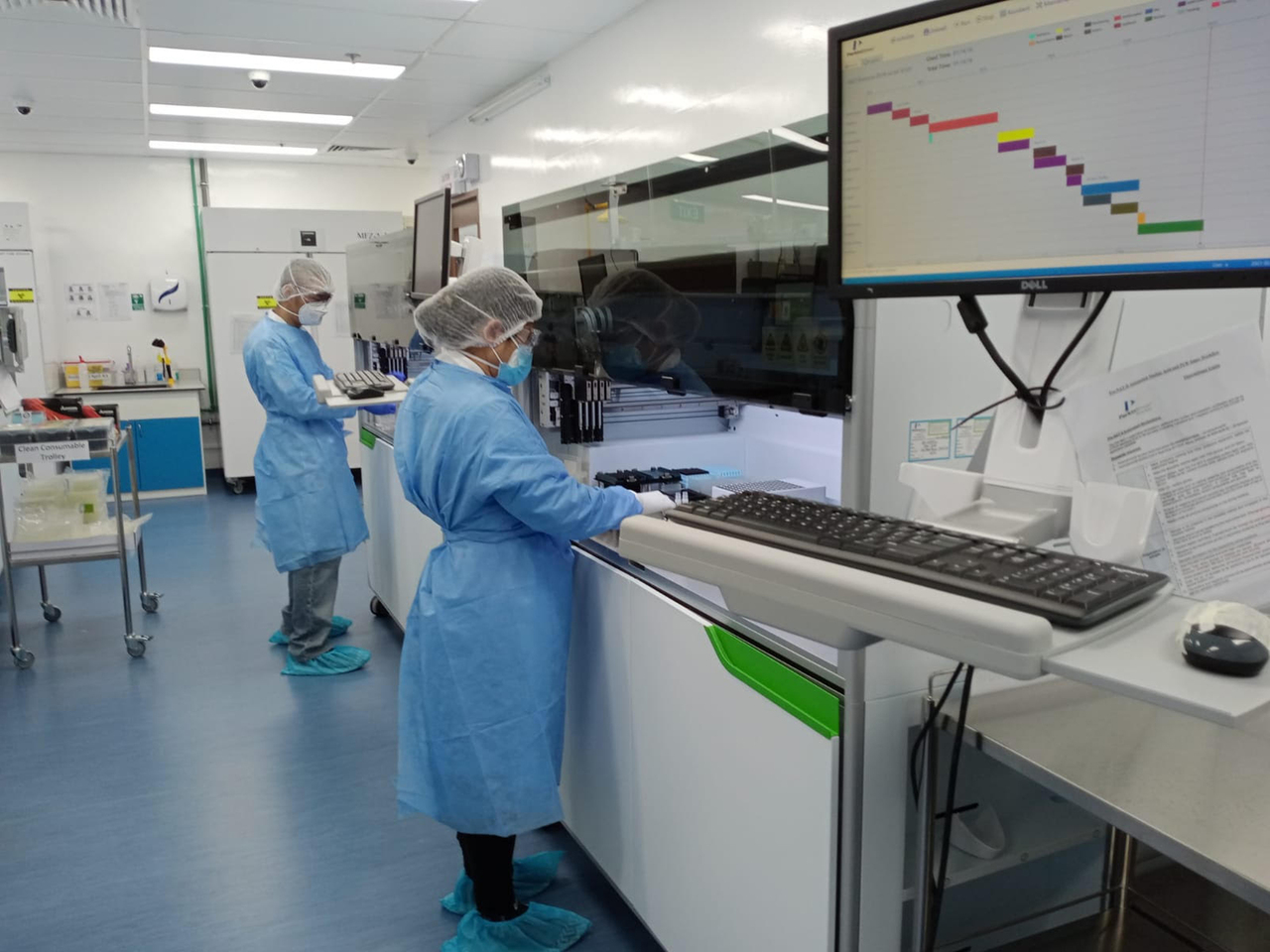Science Talk: Battling Covid-19 with Research and Innovation
Sign up now: Get ST's newsletters delivered to your inbox

During the current pandemic, diagnostics and vaccines have been developed at breakneck speed.
PHOTO: INNOVATIVE DIAGNOSTICS
Lim Chwee Teck
Follow topic:
"If you think research is expensive, try disease!" the late American health activist and philanthropist Mary Lasker once said.
This has never been more true, as we witness the devastation caused by Covid-19.
Research and innovation have played a very critical role in understanding and combating all kinds of diseases from measles, polio, Sars and Ebola to Covid-19.
Think about all the tests, vaccines and therapeutics that have been rolled out to detect, protect and treat.
During the current pandemic, diagnostics and vaccines have been developed at breakneck speed.
In fact, over a hundred PCR (polymerase chain reaction) diagnostic tests - that pinpoint active infection; as well as serology or antibody rapid tests - which detect antibodies in people with past infection; have been approved for emergency use in the United States within the last year.
Similarly, vaccines have been developed and rolled out in less than a year, a remarkable effort which could have otherwise taken several years to more than a decade.
We are living in unprecedented times and what we are witnessing today is nothing short of extraordinary on the research and innovation front.
Since the beginning of this pandemic, the scientific community has been working frantically to support emergency responses and government actions.
Huge governmental funding worldwide has been put into supporting these efforts and has enabled close collaboration between scientists and innovators to develop better diagnostics as well as producing more effective vaccines and antiviral medications.
We have also witnessed companies repurposing their production processes to produce health supplies such as masks and ventilators to meet shortages.
In Singapore, the established innovation ecosystem - the government, national laboratories with established R&D infrastructure, universities, private sector and individual entrepreneurs - has been critical in our rapid response to this pandemic.
The impression among the general public has been that research was initiated, performed and translated very rapidly for use within a short span of time.
But this is not the case.
The PCR test has been the bedrock of Covid-19 diagnosis.
However, research related to PCR actually dated back to 1976 with the isolation of the DNA polymerase from a bacteria. In 1977, biochemist and molecular biologist Frederick Sanger then reported a method for determining the sequence of DNA that earned him a Nobel Prize in 1980.
The PCR technique was eventually developed in 1985 which also earned the inventor a Nobel Prize in Chemistry in 1993. That took almost 45 years.
As for the serology or antibody test, it typically uses lateral flow assay to detect the presence of a target antibody in a human sample without the need for specialised and costly equipment; similar to that of the pregnancy test kit that contains a test strip. Their development can be traced back to the 1950s.
While the antibody test is less sensitive, its use has been critical during the pandemic to differentiate between current and past infections.
On the vaccine front, the first reported successful production of protein from mRNA injected into mice in 1990 eventually paved the way for the Covid-19 vaccines developed by Pfizer/BioNTech and Moderna.
mRNA is a single-stranded RNA molecule that is complementary to one of the DNA strands of a gene. mRNA vaccines harness it to produce viral proteins in our body that help to trigger the immune system to produce protective antibodies without using actual parts of the virus.
While we are seeing breakthroughs being developed at warp speed, none of this happened overnight.
Many of these outcomes took years and even decades to take shape.
They started with basic research with no inkling how they would one day be used.
Research is time consuming and has to undergo countless tests and retests as well as multiple failures before we eventually see success.
Sir Isaac Newton, one of the most influential scientists the world has seen, once said: "If I have seen further it is by standing on the shoulders of giants".
Indeed, many giants have stood before us.
Behind the breakthroughs and successes splashed across the papers are many untold tales - of fighting for funding, trying to work together as a team, slogging through many long days and nights and shedding of sweat and tears.
What this pandemic clearly shown us is that basic research is just as important as translational research. After all, without basic research, there would be nothing to translate.
As such, the continual support for research in Singapore will not only benefit the scientific community, but will also be critical if and when another Disease X strikes in coming years.
As we recognise healthcare and frontline workers, let's also not forget researchers around the world, who have worked tirelessly so that we can have the best weapons to fight this common enemy.
Yes, research is expensive, but not doing it comes with a much higher cost in the long run.
Professor Lim Chwee Teck is the NUS Society Professor and Director of the Institute for Health Innovation and Technology at the National University of Singapore. He is also Founding Director of the Singapore Health Technologies Consortium. He develops innovative medical technologies for better diagnosis of human diseases, including Covid-19.

